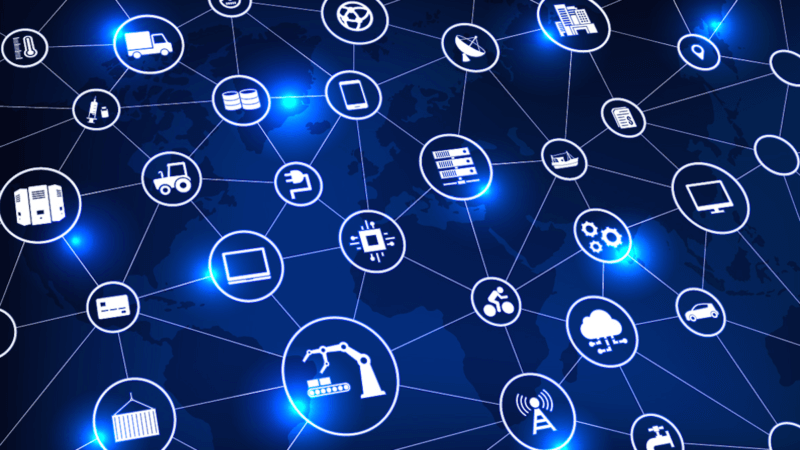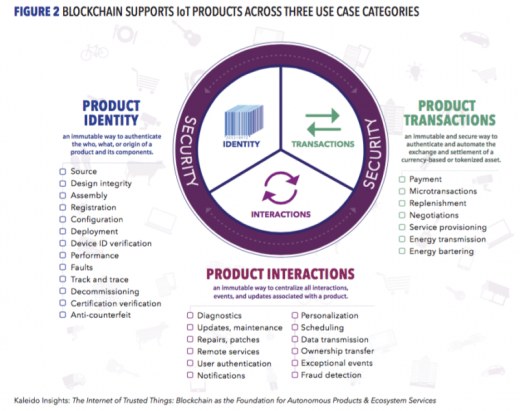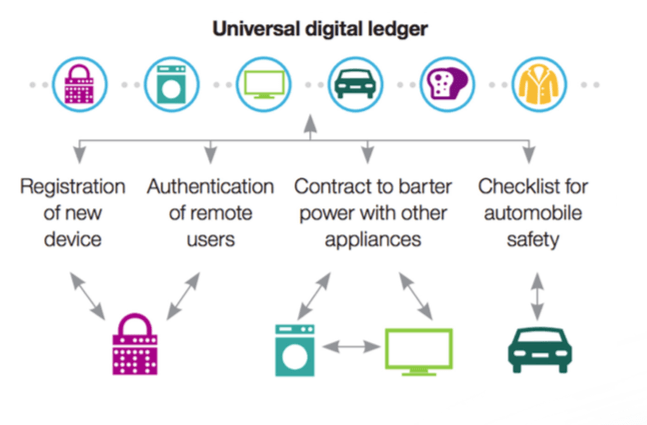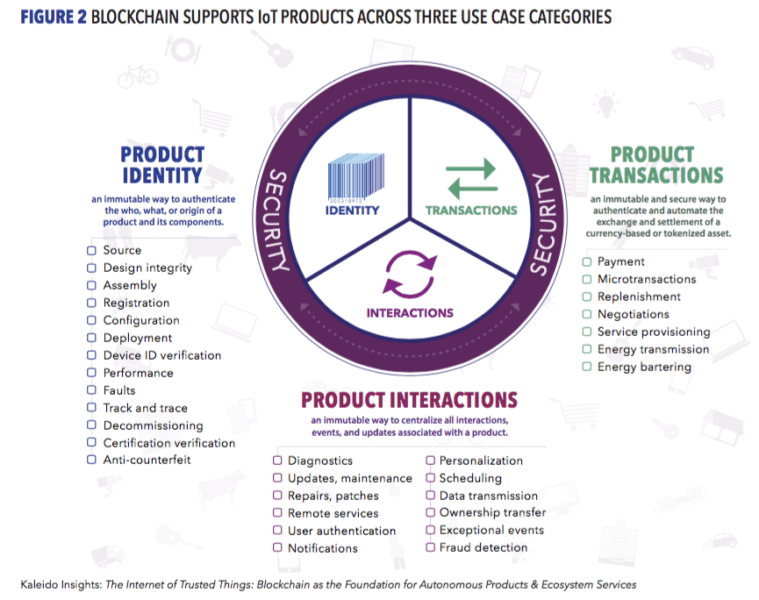New report: The Internet of Things and blockchain tech are made for each other
IoT devices are constantly talking about themselves, and shared ledger technologies just love to record it all, permanently.

A new report from research firm Kaleido Insights proposes that two of hottest new technologies — The Internet of Things (IoT) and blockchain — would make a really hot couple.
In IoT, wirelessly connected sensors are embedded in almost everything — refrigerators, auto parts, dog collars, perhaps even cereal boxes.
On the one hand, this means everything can be tracked, inventory-managed and made selectively accessible through a continual stream of signals. This flow of constantly talking objects and devices will help propel businesses away from a product-orientation (sell this car) to a service-orientation (sell the car, but maintain a connection with the car and the car owner).
On the other hand, it means that there is a continual stream of signals for as many as 10 billion connected devices and objects in the next four years, according to some estimates. Needless to say, that’s a huge amount of tracking to identify those Things, verify who owns them, authenticate their interaction with other Things and so on.
“The Internet of Trusted Things” report (free, registration required) proposes that blockchains — or other kinds of decentralized ledger technologies — could form the mechanism to monitor those oceans of signals.
Among other features, blockchains can permanently record transactions and make them immediately available to every participant in the blockchain network.
They can also enable “smart contracts,” which are software programs with a trigger and a payoff that can represent an agreement between buyer and seller, such as an automatic, agreed-upon payment when an ad is run on a site.
And they can provide a coordinated, secure and transparent tracking of transactions and activities without the need for a centralized governing authority. Here’s a report illustration (originally created by IBM) visualizing the management of roles, behaviors, permissions, transactions and events through the use of a universal digital ledger:
For report authors Jessica Groopman and Jeremiah Owyang, these and other characteristics make blockchain or similar distributed ledger technologies ideal for tracking the zillions of activities, identities and authentications that IoT devices and objects will require.
This kind of decentralized tracking, they contend, can be essential for supply chain management, scheduling, repair histories, end-user authentication, asset sharing networks and other use cases in a world where every part, every product and many unsuspecting objects are constantly communicating.
The report points to an IBM/Walmart pilot project that tracked food safety by monitoring the supply chain, using IoT sensors and blockchain. A startup called Everledger is employing public and private blockchains, along with sensors and computer vision, to maintain permanent records for fine wines, diamonds and fine art so that forgery is much more difficult. A group of companies is developing CarPass to track cars’ digital records as they go from manufacturer to a succession of buyers.
Blockchains, however, currently have some issues that can derail this vision. First of all, they are relatively slow in processing, so the current generation probably wouldn’t scale to handle all those signals.
Groopman acknowledged that blockchain’s processing speed is a “serious issue,” but she pointed to various other developing distributed ledger technologies — such as Tangle and Hashgraph — that could dramatically change that factor.
Then there’s the matter of decentralized governance. Many blockchains process transactions through the use of electricity-demanding computer processing run by human “miners.” It’s decentralized because many people are involved, but that also won’t scale.
Ledgers that are completely run by software could solve the scaling problem, but blockchain’s purported trust factor has been driven in part by the fact that every participant is checking everyone else.
At any rate, this report has pointed out the huge, hidden drawback in the emerging world of constantly signaling Things. Some fabric of awareness has to be listening all the time, and it can’t be humans.
[Read the full article on MarTech Today.]
Marketing Land – Internet Marketing News, Strategies & Tips
(45)





